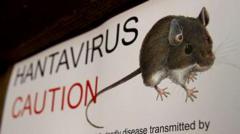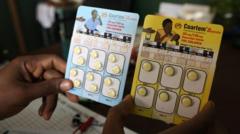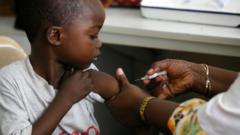Hantavirus is a disease primarily transmitted through exposure to rodents, known to cause Hantavirus Pulmonary Syndrome, which can be deadly. Victims often face severe respiratory issues with high mortality rates. Authorities report its prevalence remains low but caution against rodent exposure as preventative measures.
Hantavirus and its Fatal Impact: Understanding the Risks

Hantavirus and its Fatal Impact: Understanding the Risks
The recent death of Betsy Arakawa, wife of Gene Hackman, highlights the dangers of hantavirus, a disease with flu-like symptoms that can escalate to severe illness.
In a tragic revelation, it has been confirmed that Betsy Arakawa, the wife of acclaimed Oscar-winning actor Gene Hackman, succumbed to a respiratory illness linked to hantavirus, a rare virus transmitted predominantly by rodents. Health experts emphasize that hantavirus can induce flu-like symptoms following exposure to contaminated rodent droppings, and in drastic cases, it may escalate into Hantavirus Pulmonary Syndrome (HPS), a severe lung condition responsible for her passing.
Arakawa reportedly died just a week prior to her husband's death, who faced advanced Alzheimer's disease. The couple was discovered at their New Mexico residence last month, prompting health officials to investigate the circumstances surrounding her death.
So, what exactly is hantavirus? It is a viral strain carried by rodents, primarily spread to humans through inhalation of airborne particles from dried rodent droppings. According to the Centers for Disease Control and Prevention (CDC), infections generally occur when these particles become airborne from a rodent’s urine, droppings, or saliva. Although transmission through bites or scratches is less common, it remains a possibility. Deer mice are identified as the primary carriers of hantavirus in North America, as per findings from the Mayo Clinic.
Hantavirus is known to cause two major illnesses, with Hantavirus Pulmonary Syndrome being the predominant strain observed in the U.S. Reports confirm that this was the illness that ultimately took Ms. Arakawa's life. Onset symptoms often include fatigue, fever, and muscle aches, later progressing to headaches, dizziness, chills, and abdominal pain. The mortality rate can soar to approximately 38% if respiratory symptoms manifest.
Globally, Hantavirus infections remain rare, with only 864 cases reported in the U.S. from 1993 to 2022, according to the CDC. The majority of these occurrences are located in rural areas, including states like California, Washington, and New Mexico. Notably, the CDC's surveillance efforts began during a severe respiratory outbreak in the Four Corners region, which comprises Arizona, Colorado, New Mexico, and Utah. Internationally, around 150,000 cases of Haemorrhagic Fever with Renal syndrome are reported annually, with over half occurring in China.
Although there is no specific treatment for hantavirus, the CDC advises supportive care for those infected. Individuals experiencing severe symptoms may require hospitalization, potentially including intensive care and mechanical assistance for breathing. Prevention is critical; the CDC recommends eliminating contact with rodents in any environment and advising on measures to block rodents’ access to homes. Wearing protective gear while cleaning rodent droppings is also paramount to minimize inhalation of harmful particles.




















